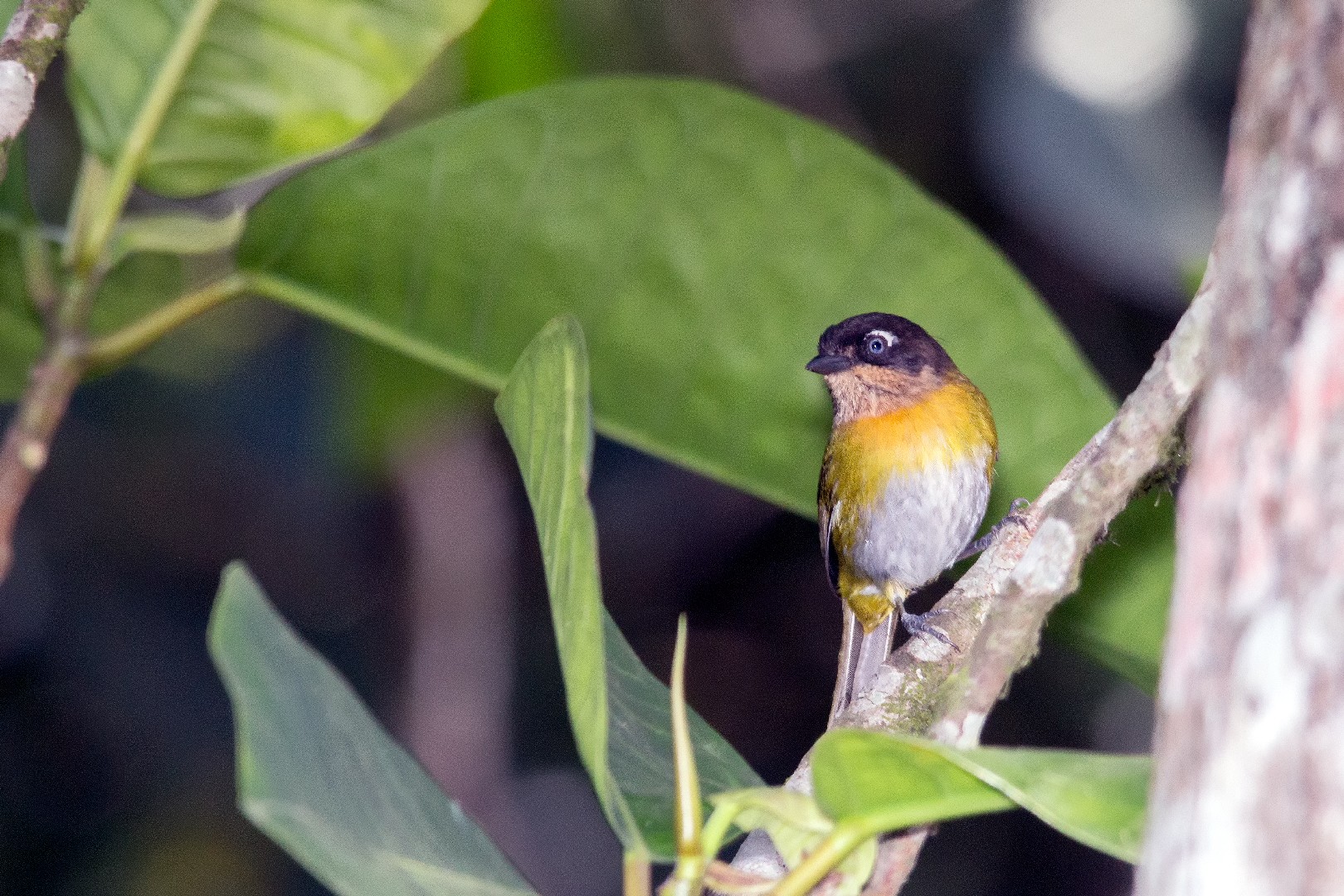Common Chlorospingus
A species of Chlorospinguses Scientific name : Chlorospingus flavopectus Genus : Chlorospinguses
Common Chlorospingus, A species of Chlorospinguses
Botanical name: Chlorospingus flavopectus
Genus: Chlorospinguses
Content
Description General Info
 Photo By Fernando Flores , used under CC-BY-SA-2.0 /Cropped and compressed from original
Photo By Fernando Flores , used under CC-BY-SA-2.0 /Cropped and compressed from original Description
The adult is 13.5 cm (5.3 in) long and weighs 20 g (0.71 oz) on average. They have a brown head with a (usually) thin supercilium and a white spot behind the eye and a light throat. The upperparts are olive and the underparts yellow, becoming white on the belly. Coloration, especially of the cheeks, throat and eye region, is very variable across the wide range, giving weight to the theory that this these birds form a superspecies. Immatures are browner above, darker below, and have a duller olive eye spot. Hatchlings are covered in dark gray down feathers and have bright yellow bills. The call is a squeaky tseeet or chit. Songs vary widely between the populations. The related sooty-capped bush tanager (C. pileatus) has a blacker head with a bold white supercilium rather than an eye spot. This bird is typically found from 400 to 2,300 m (1,300 to 7,500 ft) ASL in Middle America; near the Equator they are common found at altitudes of 2,000–3,500 m (6,600–11,500 ft) ASL. Its habitat – cloud forests with ample undergrowth and adjacent bushy clearings – is dominated by trees and shrubs from such families as Asteraceae, Clusiaceae, Cyatheaceae, Melastomataceae, Rubiaceae and Winteraceae, and epiphytes of the Araceae (e.g. Anthurium) and Orchidaceae. The common bush tanager is usually encountered in small groups or as part of a mixed-species feeding flock, and is rather sedentary. This passerine feeds on insects, spiders small fruits and nectar. The menoponid chewing louse Myrsidea ophthalmici was described from a Venezuelan specimen of this bird; it is not known from other hosts to date. The Venezuelan population of the common bush tanager would, if this taxon is split up, be assigned to a distinct species. There is apparently no dedicated nesting season at least in the hottest parts of its range, but in general it seems that the common bush tanager prefers to breed mainly between October and May. These birds hide their nest below vegetation on a bank or slope, in a hollow or tree trunk, amongst epiphytes, or up in a tree. The bulky cup nest, made from thin twigs and roots, coarse leaves and mosses, is some 10–15 cm (3.9–5.9 in) high and nearly 10 cm (3.9 in) wide. The nest cup, lined with fine leaves and fibers, is almost 5 cm (2.0 in) wide and deep. The nest may be placed over 20 m (66 ft) up in a tree, but usually is located 15 m (49 ft) high or less; in most populations nests are occasionally built less than 1 m (3.3 ft) above and sometimes even right on the ground. The normal clutch is two eggs in most of the range. The northernmost populations, however, sometimes produce clutches of three eggs, while in the southern Andean group one-egg clutches might be frequent or even the norm. This species is regularly double-brooded at least in part of its range. The eggs are off-white and marked with larger puce and smaller maroon spots mainly on the blunt end. They are about 20 mm (0.79 in) long and weigh about 2.4 g (0.085 oz) on average, though eggs in one-egg clutches of Andean birds may measure almost 24 mm (0.94 in) in length and normally weigh around 3 g (0.11 oz), but occasionally more than 3.5 g (0.12 oz) . The female incubates for much of the day, while both parents provide the young with food. As the nestlings near fledging, they are fed every 15 minutes or so on average. 
Size
13 - 14 cm
Nest Placement
Shrub
Feeding Habits
Common Chlorospingus mainly feeds on small berries, fruits, and seeds complemented by various arthropods like beetles and insects. Foraging actively in foliage, often in mixed-species flocks, it employs unique methods to obtain fruit juice, highlighting adaptability in its dietary habits.
Habitat
Common Chlorospingus inhabits humid montane forests, including forest borders, particularly where moss and epiphytes are abundant. It thrives in a range of altitudes but predominantly at elevations between 1000–2700 meters. The species favors secondary growth, bushy clearings, and pastures within forested areas. Though variation exists, in general, common Chlorospingus is present at higher elevations in the Andes compared to Middle America, with records extending up to 3500 meters in some regions.
Dite type
Omnivorous
General Info
Feeding Habits
Bird food type
Species Status
Not globally threatened.
Scientific Classification
Phylum
Chordates Class
Birds Order
Perching birds Family
New world sparrows Genus
Chlorospinguses Species
Common Chlorospingus